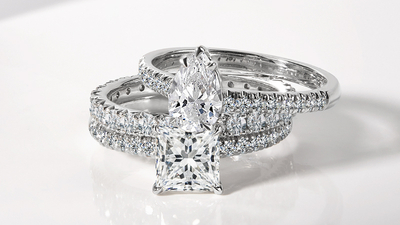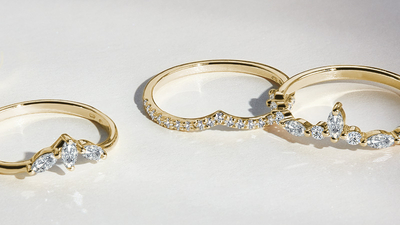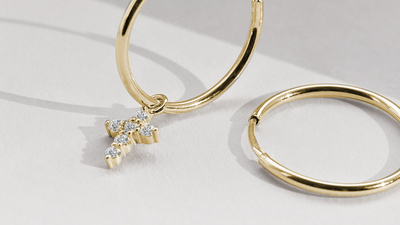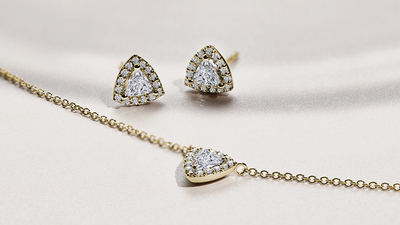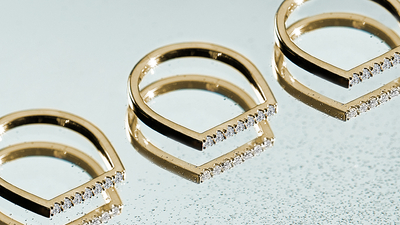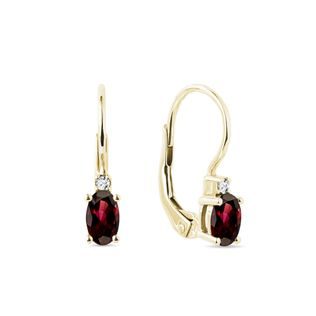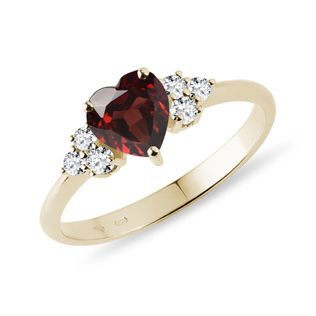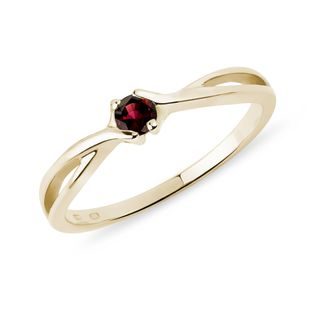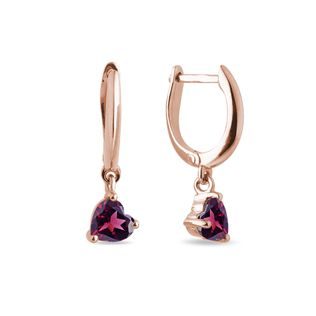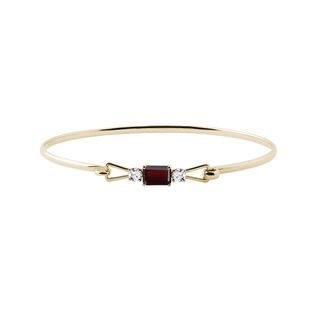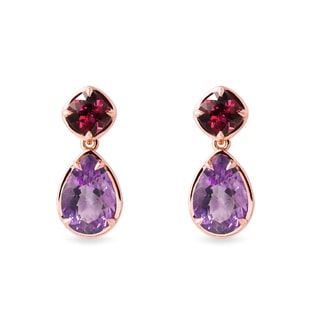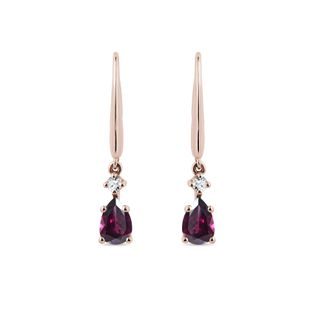When we say garnet, we most likely think of that particular type of Czech garnet, a deep red gemstone that is famous all over the world. But the word garnet is actually more of a name for a large group of minerals that have the same atomic and crystal structure, but which differ in their chemical composition. There may therefore be large differences in color and properties between the various types of garnets. And lesser known garnets such as rhodolites or tsavorites are becoming more and more popular in jewelry making.
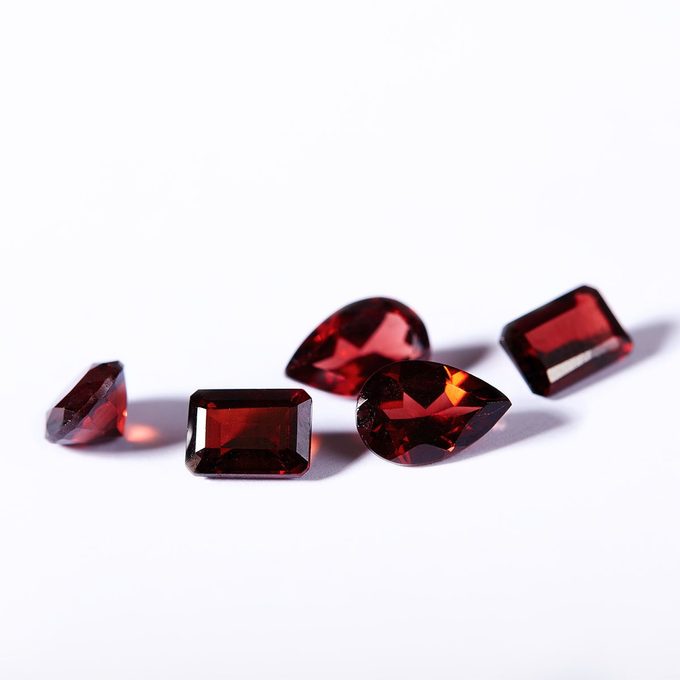
The history of garnets in a nutshell
The name “garnet” comes from the Latin name for the pomegranate, which is granatum malum and those with an eagle eye won’t miss the fact that some pieces of garnet really do resemble the seeds of this fruit. Archaeological finds from the Scythian period (the 6th-4th century BCE) prove that garnets have been known to humanity since ancient times. The beauty of garnets was already appreciated in ancient Egypt, ancient Greece as well as in other ancient cultures. One of the oldest examples of this is a green cylindrical spessartine seal originating from the Mesopotamian city of Ur. It dates back to the 21st century BCE and was meant to demonstrate the power of the last Sumerian king, Ibbi-Sin. In the times of the Roman philosopher Pliny the Elder, red garnets were called carbuncul and this name applied to all red stones since it means “hot little coal”.
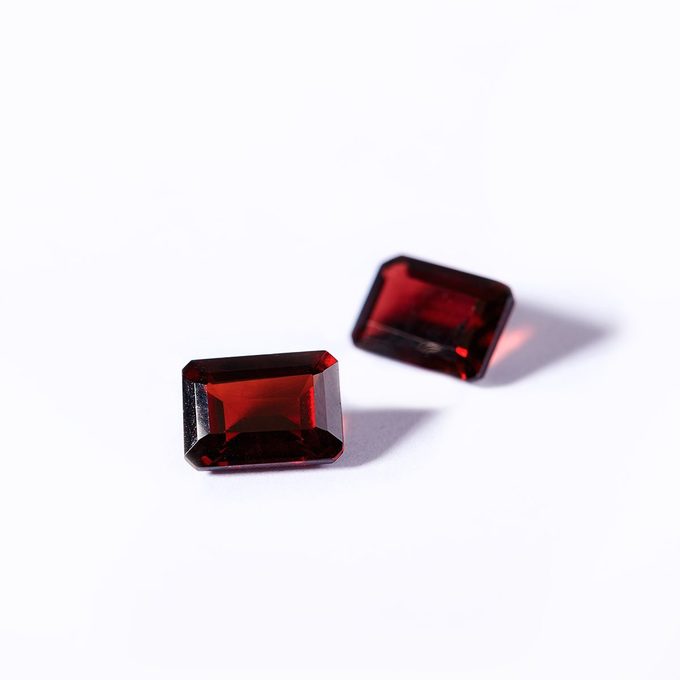
A symbol of love and passion
The garnet is the birthstone for those born in January and is usually also given as a gift for a second wedding anniversary. In ancient times, garnets were attributed with magical powers. Due to their deep red color, they are associated with love, passion and life energy. They were supposed to increase the vitality of their wearers, protect them from their enemies and encourage the imagination. They were also supposed to have a positive effect on the functioning of the heart and on blood circulation while the Middle Ages gave garnets an interesting association since during those times, it was believed that the eyes of dragons were made of garnets.
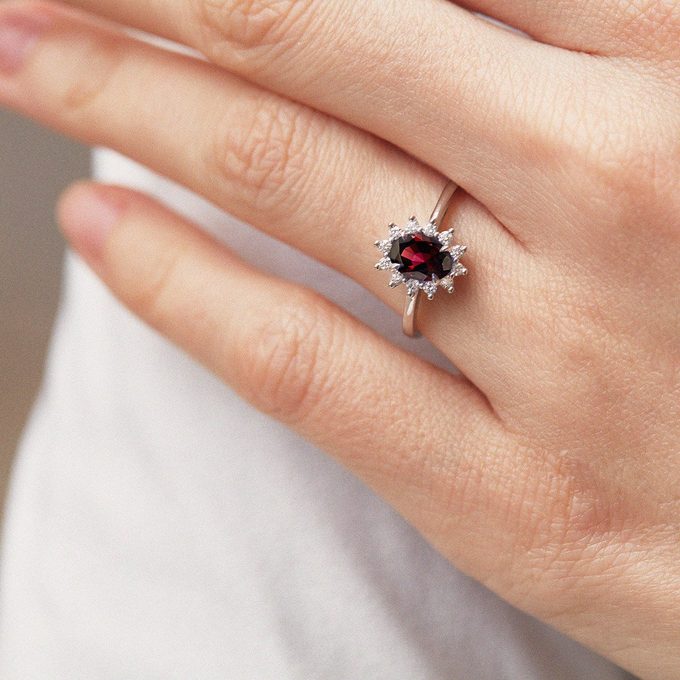
Garnets and geology
If garnets were a topic in a chemistry class, you would see the formula X3Z2 [SiO4] 3 on the board. The formula contains several variables and when these are substituted for the relevant specifics, then we get individual varieties of garnet. Instead of X we can substitute calcium (Ca), manganese (Mn), iron (Fe2 +) or magnesium (Mg) and instead of Z, it is also possible to substitute aluminum (Al), iron (Fe3 +), chromium (Cr), vanadium (V3 +), zirconium (Zr) or titanium (Ti) in the formula. The varieties are genuinely huge, but we essentially distinguish garnets into six basic groups: almandine, pyrope, grosular, andradite and spessartine. Many of the varieties of garnets can be understood as a transitional type of the mineral which sit in between two other forms of it.
Garnets are a type of mineral that crystallizes in the cubic system and they are usually found in the form of rhodododecahedric and hexaoctoedric crystals. Less frequently, they form granular and compact aggregates. They range between 6.5 - 7.5 on the Mohs scale of hardness and their other characteristics are fragility, a very indistinct cleavage and an uneven fracture which is conchoidal and splintery. They have a white streak with a touch of color in it and their luster is vitreous to resinous. With the exception of andradites, acids don’t dissolve garnets and they melt easily except those which contain chromium such as knorringites and uvarovites. Garnets are a group with so much variety, that it is possible to find them in all colors except clear blue. One great advantage of garnets is that they usually don’t contain visible inclusions. Fans of natural stones will also appreciate that they do not normally undergo any modifications. Now let's look at some types of garnets in more detail.
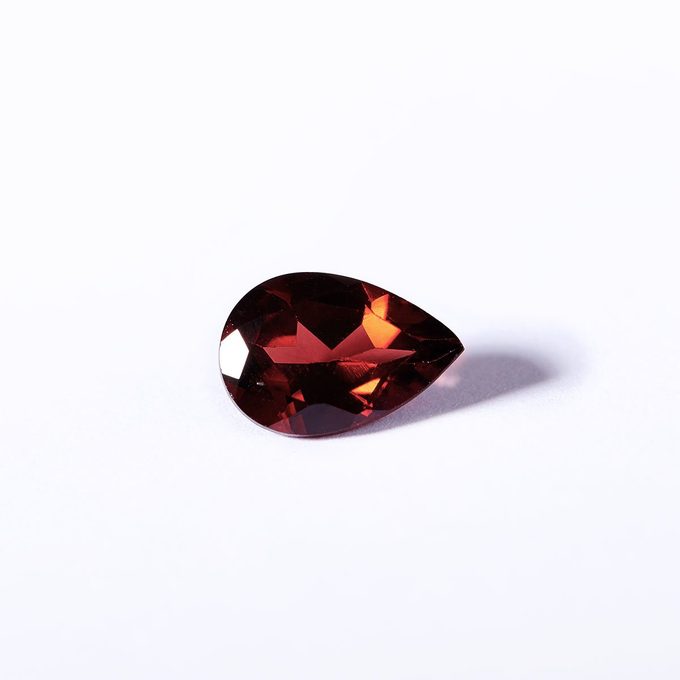
Almandine
This deep red garnet with a purplish tinge is one of the most common types of garnets. It was named in 1546 by the German scholar and father of mineralogy, Georgius Agricola and refers to the ancient site of Alabanda in Turkey where gemstones were cut and polished. In general, the darker it is, the more valuable it is. Almandine deposits are found all over the world and are also present in the Czech Republic. However, most of the pieces on the market come from India and are often mistaken for Czech garnets, which are rarer and more valuable than the Indian ones.
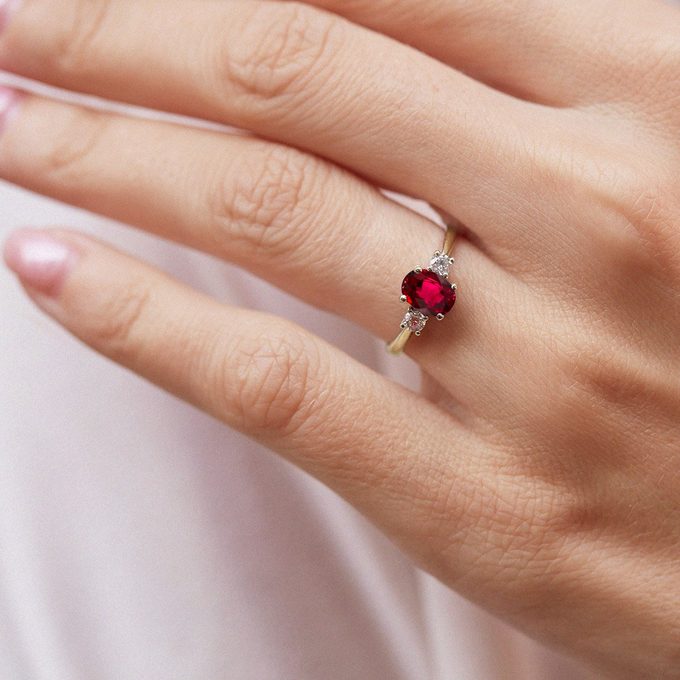
Rhodolite
The gemstone variety of almandine is called rhodolite and it has the chemical formula Mg3Al2 (SiO4) 3. It is sometimes classified as pyrope because it is 70% pyropic and 30% almandine. It is found both under pyropes and under almandines in various publications. As you can see, classifying garnets is a bit of a mystery.
The name is derived from the Greek words rhodon (a rose) and lithos (a stone) though other sources claim that it is named after rhododendron flowers, since the color of the flowers is strikingly reminiscent of the color of the crystals. It was discovered in North Carolina, USA in the 17th century. Today however, it is imported mainly from East Africa.
Rhodolites are considered to be the noblest of red garnets. This is because they have a beautiful color which can range from dark purple-red all the way to a light pink. The rarest are rhodolites with a raspberry red color which even surpass any sapphires or rubies with their luster.
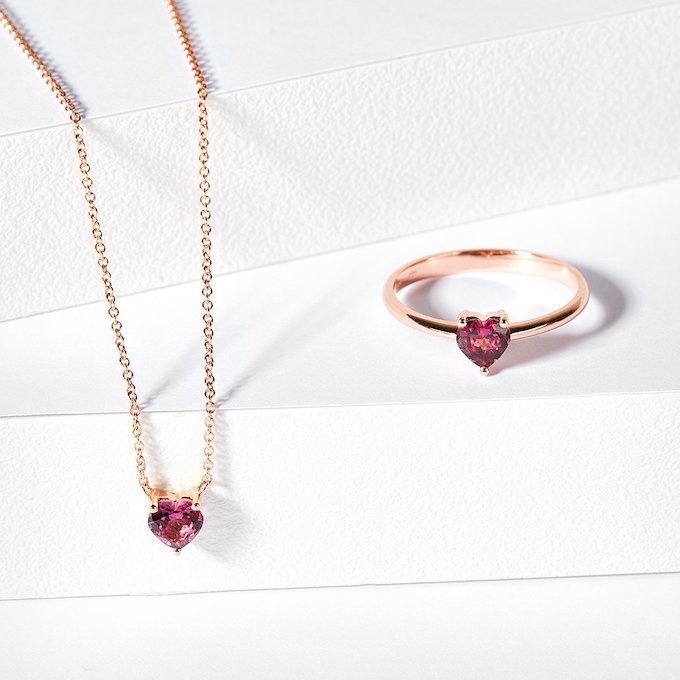
Czech garnet
Czech garnets could even be considered a national treasure. Jewelry made from them is passed down in families from generation to generation and tourists like to bring it home as a souvenir. Garnets were already known to the Celts that earlier inhabited the Czech lands and Czech goldsmiths worked extensively with garnets in the Middle Ages. Proof of this fact lies in the coronation cross of the Czech king Přemysl Otakar II which was decorated with garnets. Their fame reached its peak during the reign of emperor Rudolf II. During this period, this geographically specific type of garnet also acquired its name of "Czech garnet", which is a successful sales “brand” to this day.
From a mineral point of view, Czech garnets belong to the mineral group known as pyropes. The name pyrop comes from Greek and means “fiery eye”. Pyropes are also found elsewhere in the world and are actually not that rare. However the Czech ones stand out with their crimson red color which is also referred to as the color of pigeon blood. Czech garnets are found in smaller sized stones that don’t exceed 0.24 inches. Almandines on the other hand are usually larger in size, so if you see a garnet of about 0.4 inches in size in a piece of jewelry, it will most likely not be a Czech garnet. You can also distinguish these two types of garnets from each other by their color. While a Czech garnet is pure red in color, an almandine will show some purple tones.
Tsavorite
The most typical color for garnets is red, but other colors also feature. Tsavorite, a beautiful green stone which you will also find in KLENOTA jewelry range is evidence of this. Its chemical composition means that it belongs to the grossular calcium garnet group species. Behind its attractive light to deep green color is the addition of vanadium and chromium, as a result of which it is often compared to emerald. It is also possible to see yellowish or bluish shades of color in it and its crystals are translucent or transparent dodecahedrons.
Tsavorite was first discovered in 1967 by British geologist Campbell Bridges in northern Tanzania. However due to the political situation at the time, it eventually got its name from the Tsavo National Park which lies in the basin of the Tsavo river in Kenya. Tiffany & Co discovered the potential of tsavorite to make its name in the world of jewelry. Today, there are only a couple places where it is mined under very difficult conditions. Therefore, it belongs to a group of very rare and highly valued gemstones. At deposits where it is mined, it is also often accompanied by crystals of the rare chrome tourmaline.
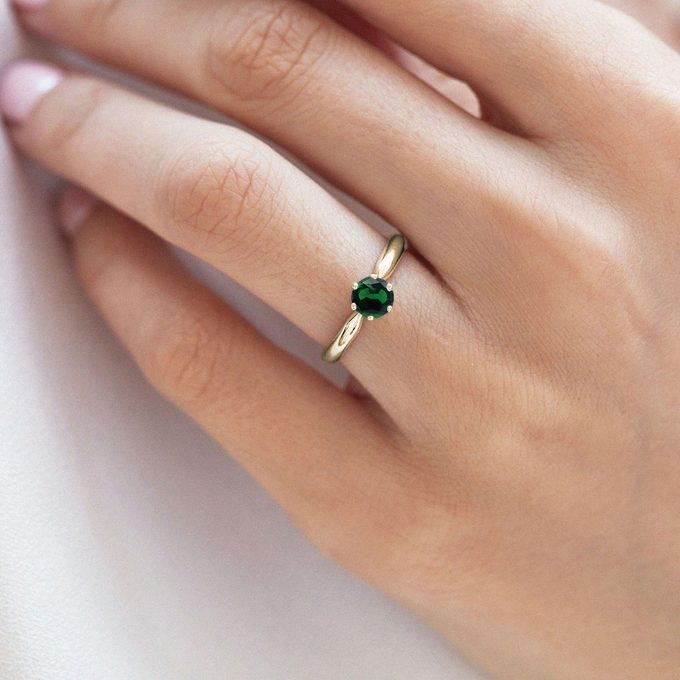
Garnet jewelry with a modern style
Traditional jewelry made of Czech garnets may be perceived by the younger generation as far too old fashioned. However garnets offer a much wider range of uses and are also suitable for fresh and modern jewelry designs. At KLENOTA jewelers, we work with high quality garnets that excel in their strong, distinctive color, high luster and which can be cut and polished into a variety of shapes. Garnets can be a great alternative to rubies or emeralds, which would be unaffordable in a comparable size and quality. In our collection, you’ll find both classic almandines as well as rhodolites and tsavorites. Worth mentioning is a rhodolite ring in the shape of a heart or a minimalist open bracelet made of white gold with two teardrop shaped rhodolites. Garnets complement perfectly with diamonds, but we have also had a bit of fun with bolder color combinations in our collection. An example are our luxury earrings with rhodolites and amethysts.
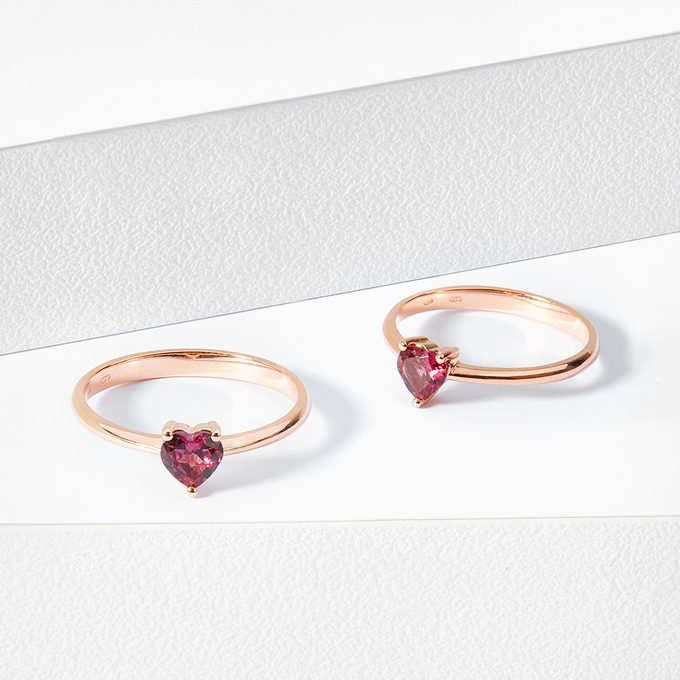
How to best care for garnet jewelry
Garnets are not one of those gemstones that are bothered by high temperatures and they maintain their color fastness, so it is not necessary to shield them from the sun. However garnets don’t like heat shocks which you could cause by cleaning them with very hot water or steam for example. Wipe them with a soft cloth instead. In terms of hardness, garnets are fine even if they don’t match the hardness of diamonds. However you should continue to be careful when wearing garnets, as they are relatively fragile.
And finally, if you give love and care to your garnet jewelry, it will dazzle you with its beauty for eternity.
